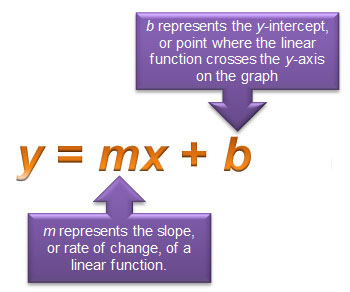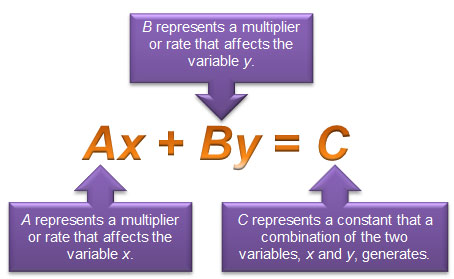
You may have studied ways to represent a linear function using the starting point and a rate of change. You may have called this form of a linear function slope-intercept form.

![]() Use what you know about slope-intercept form of linear equations to build inequalities from each of the following situations.
Use what you know about slope-intercept form of linear equations to build inequalities from each of the following situations.
How is building an inequality in slope-intercept form similar to building an equation in slope-intercept form? How is it different?
Interactive popup. Assistance may be required. For both equations and inequalities in slope-intercept form, there is an initial amount and a number of items that is multiplied by the rate of change. For equations, the sum (of the initial amount and product of the rate of change and amount of items) is equal to a given number. For inequalities, the sum is compared to an upper limit (for “less than” conditions) or a lower limit (for "greater than" conditions).
You also examined situations that could result in equations written in standard form. Standard form of a linear equation is Ax + By = C. In this representation, A, B, and C are constants that show the relationship between two variables, x and y.

![]()
When writing the inequalities in standard form, how did you determine the coefficients for each of the variables?
Interactive popup. Assistance may be required. A rate, or multiplier, that relates to the number of items described by a variable becomes the coefficient for that variable.

Interactive popup. Assistance may be required.
Does 125 represent an upper limit (< or ≤) or a lower limit (> or ≥)? Interactive popup. Assistance may be required.
40 + 6t ≤ 125
Interactive popup. Assistance may be required.
40 + 6t ≤ 125
Interactive popup. Assistance may be required.
Does 2,000 represent an upper limit (< or ≤) or a lower limit (> or ≥)? Interactive popup. Assistance may be required.
750 + 120s ≤ 2,000
Interactive popup. Assistance may be required.
750 + 120s ≤ 2,000
Interactive popup. Assistance may be required.
Does $150 represent an upper limit (< or ≤) or a lower limit (> or ≥)? Interactive popup. Assistance may be required.
2.50b + 3.50m > 150
Interactive popup. Assistance may be required.
2.50b + 3.50m > 150